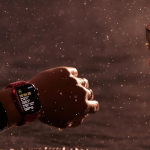The “type-2” poliovirus derived from vaccines has been circulating in the city’s sewers between February and May, with the UK Health Security Agency announcing an investigation into whether there is community transmission.Vaccine-derived poliovirus type 2 (VDPV2) is different from the paralysis-causing wild polio, which was fully eradicated in Britain almost 20 years ago, in 2003, and now only exists in places like Afghanistan, Pakistan and Nigeria. Australia was declared “polio-free” in 2000.But there are fears that type 2 polio, which occurs when oral polio vaccines containing weakened versions of the live virus are shed through kids’ digestive systems, can mutate into a version that regains the ability to paralyse.UK Health epidemiologist Vanessa Saliba stressed that the overall risk to the public is rare and extremely low.“On rare occasions, it can cause paralysis in people who are not fully vaccinated so if you or your child are not up to date with your polio vaccinations it’s important you contact your GP,” Ms Saliba said.“We are urgently investigating to better understand the extent of this transmission,” she added.The World Health Organisation released a statement saying there had been no associated cases of paralysis detected but that more analysis was underway.“Any form of poliovirus anywhere is a threat to children everywhere,” the statement said.“It is important to note that the virus has been isolated from environmental samples only,” they added.The infectious disease, which is highly contagious, most commonly affects children under five years of age and attacks the nervous system, causing paralysis in extreme cases.Genetic analysis of samples taken from the same site between February and May suggests they share a common origin, but it has yet to be identified, the WHO said.Officials believe the samples could be linked to extended family members in northeast London, possibly from someone recently vaccinated in a country where it hasn’t been eradicated.NED-6509-Immunisation-data-2021Additional sewage samples collected upstream from the city’s Beckton Sewage Treatment Works are also being analysed.While there have been one-off detections of “vaccine-like” polio in previous years that disappear naturally, this is the first time since 1984 that the same virus has been detected months apart.A massive global effort has in recent decades come close to wiping out polio. Cases decreased by 99 per cent since 1988, when polio was endemic in 125 countries and 350,000 cases were recorded worldwide.Weakened but live Type 2 polio still causes occasional outbreaks elsewhere. The oral polio vaccine (OPV) replicates in the gut and can be passed to others through faecal-contaminated water — meaning it won’t hurt the child who has been vaccinated, but could infect their neighbours in places where hygiene and immunisation levels are low.It can cause serious illness and paralysis in people not vaccinated against the disease.The UN’s health agency has called for OPV to be phased out worldwide and replaced with inactivated polio vaccine (IPV).Britain stopped using OPV in 2004, and British health authorities said it was likely that the virus found in the sewage samples had been imported by someone who was recently vaccinated with it abroad.WHAT IS POLIO TYPE 2?There are 3 poliovirus serotypes: type 1, type 2 and type 3. Vaccine-derived poliovirus type 2 (VDPV2), the variant detected in London, occurs when oral polio vaccines containing weakened versions of the live virus are shed through kids’ digestive systems. If it circulates in unvaccinated populations long enough, it can mutate into a version that regains the ability to paralyse.HOW POLIO IS SPREADPolio, caused by the poliovirus, is a highly contagious disease spread from human to human usually through faecal to oral transmission and sometimes oral to oral transmission. After entering through the mouth, the virus multiplies in the pharynx and gut and is excreted in faeces for several weeks. The virus invades local lymphoid tissue, enters the bloodstream, and may then infect and replicate in cells of the central nervous system, according to the Australian Department of Health. Polio has an incubation period of 3 —21 days. People are most infectious from 7 —10 days before symptoms start to 7 —10 days after symptoms start.POLIO SYMPTOMSPolio is the disease caused by the poliovirus infection. It is a serious illness that can lead to long-term disability, paralysis and death. Symptoms include headache, gastrointestinal disturbance, malaise, stiffness of the neck and back (which suggests meningitis), and paralysis (called paralytic polio), which is usually asymmetric. While most people recover completely, some experience muscle and nerve damage that result in lifelong disability.POLIO IN AUSTRALIAPolio began declining in Australia from the 1960s until the country was declared “polio-free” in 2000, with the Department of Health saying the country was not at risk of an outbreak.The most recent laboratory-confirmed case of wild-type polio in Australia was in 2007, when an overseas-born student acquired the disease during a visit to Pakistan. The previous case was 30 years earlier, when a person arrived from Turkey in 1977.“Polio is very unlikely to spread in Australia because of high rates of vaccine coverage, good sanitation, and the quality and ability of the health system to respond to cases,” the department says on its website.With AFP.
Powered by WPeMatico





